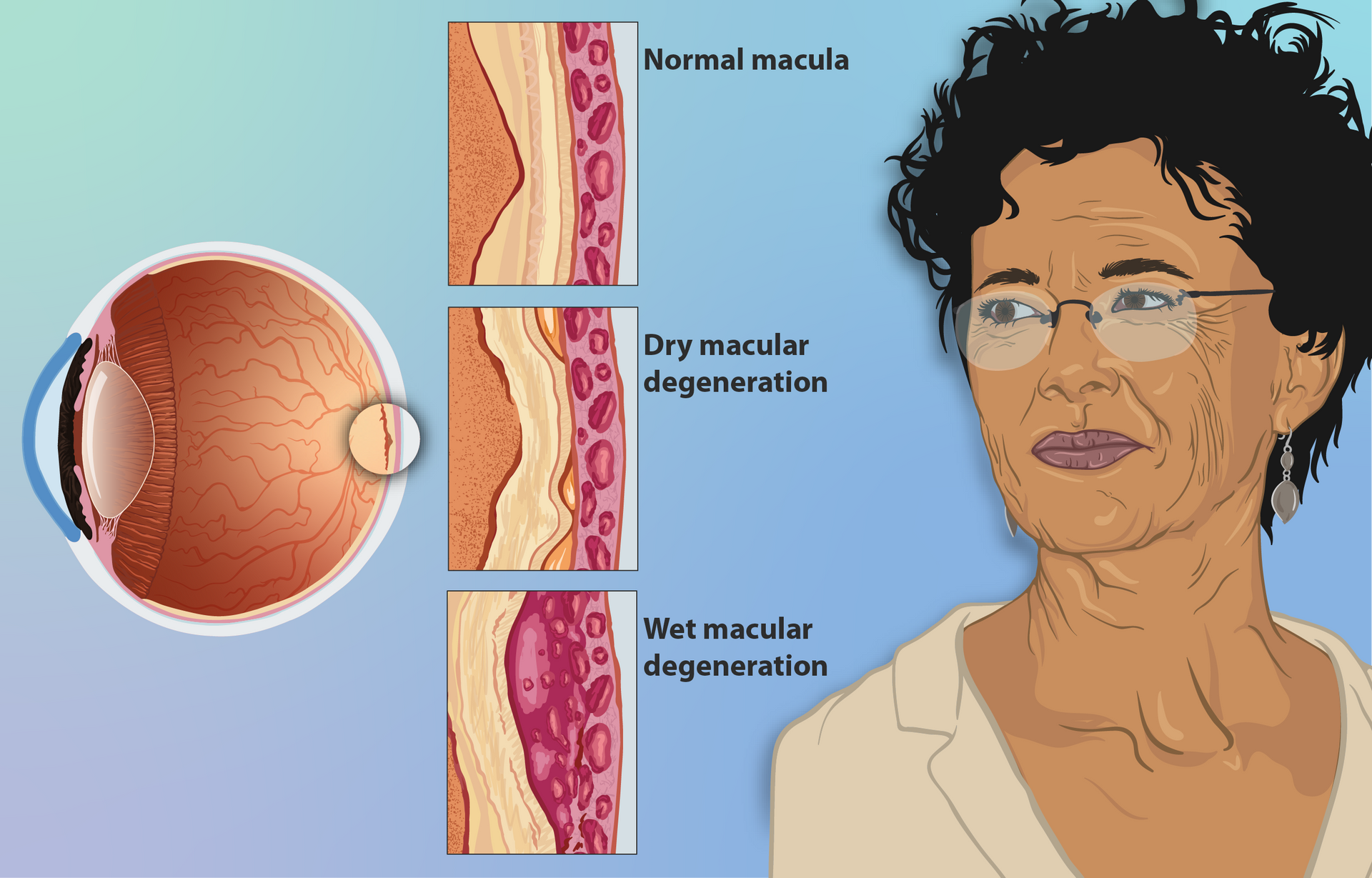What's New with Macular Degeneration?
Let's talk about macular degeneration.
What is Macular Degeneration?
Age-related macular degeneration (AMD) is a leading cause of vision loss among older adults, impacting central vision and the ability to see fine details. It is caused by an accumulation of waste material, called drusen, that the eye would normally shed. At times, new blood vessels can develop and leak as well. The condition primarily affects the macula, the central part of the retina, which is responsible for sharp, straight-ahead vision necessary for tasks like reading, driving, and recognizing faces. Studies have shown that risk factors include UV exposure, smoking and a lack of anti-oxidants in one’s diet.
Dry vs. Wet AMD
There are two primary types of AMD: dry (atrophic) and wet (neovascular). Dry AMD is more common and progresses gradually as the macula thins with age. It typically results in the slow deterioration of vision. Wet AMD, while less common, is more severe and can lead to rapid vision loss. It occurs when abnormal blood vessels grow beneath the retina and leak blood or fluid, leading to scarring of the macula.

Illustration showing dry AMD (yellow spots depicting drusen) and wet AMD (demonstrating new blood vessels).
Traditional Treatment Approaches
For dry AMD, there has historically been no cure. Treatment typically focuses on slowing progression with nutritional supplements containing antioxidants and zinc, based on the Age-Related Eye Disease Study (AREDS) formula. These supplements are particularly beneficial for people in the intermediate stages of the disease.
For wet AMD, the mainstay treatment has been anti-vascular endothelial growth factor (anti-VEGF) injections. Medications like ranibizumab (Lucentis), aflibercept (Eylea), and bevacizumab (Avastin) work by inhibiting the growth of abnormal blood vessels in the retina. While these injections have proven effective in preserving vision, they require frequent administration, which can be burdensome for patients.
Emerging Treatment Options
Recent advancements offer new hope for AMD patients, particularly those with the wet form of the disease. One of the most exciting developments is the introduction of longer-lasting anti-VEGF treatments. Faricimab (Vabysmo), a recently approved medication, is a bispecific antibody that targets both VEGF and angiopoietin-2, extending the duration between injections and offering improved outcomes.
Gene therapy is also on the horizon, aiming to reduce the need for regular injections. Treatments like RGX-314 involve injecting a viral vector carrying a gene that enables retinal cells to produce their own anti-VEGF proteins. This approach could provide a more sustained and consistent treatment, potentially lasting for years.
For dry AMD, research into therapies like pegcetacoplan (Syfovre) is showing promise. This treatment targets complement proteins that contribute to the inflammatory processes leading to retinal degeneration. Early trials indicate that it may slow disease progression in patients with geographic atrophy, an advanced form of dry AMD.

Injections aimed to halt blood vessel growth remain mainstay treatment for wet AMD.
In Summary
The landscape of macular degeneration treatment is always evolving New therapies are not only aiming to preserve vision but also to improve the quality of life for those affected by AMD. Early detection is always ideal, and we are able to detect even early stages of AMD with our equipment here at Monocle Optometry.



